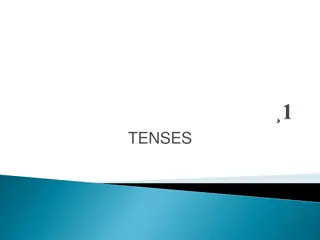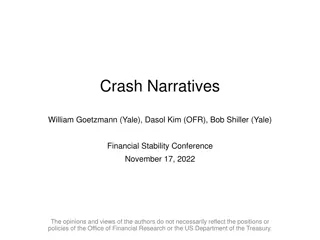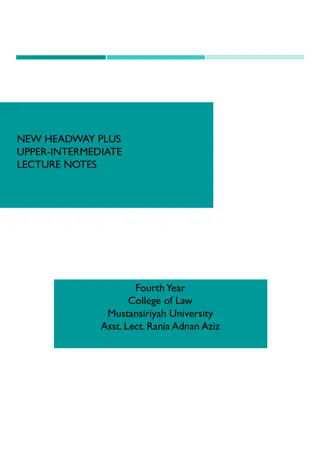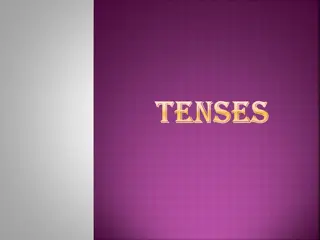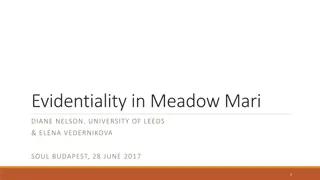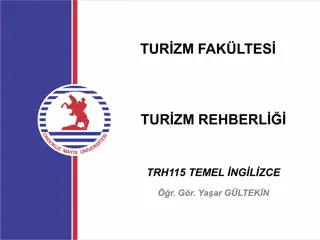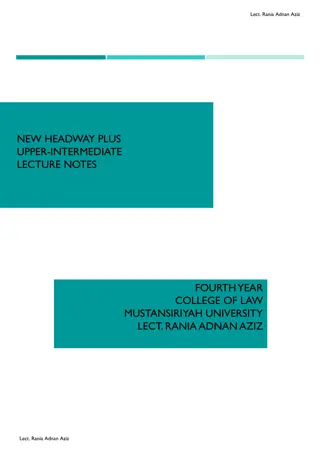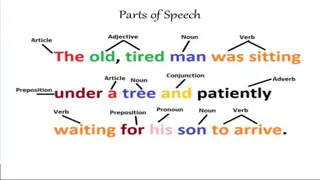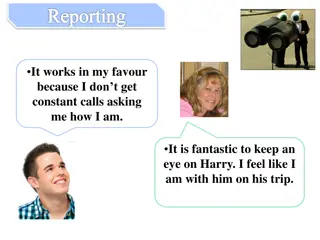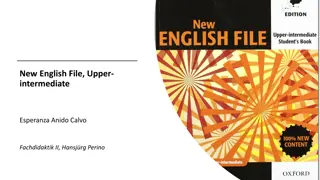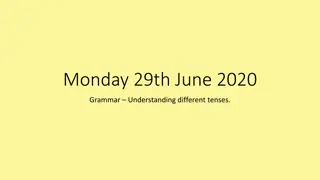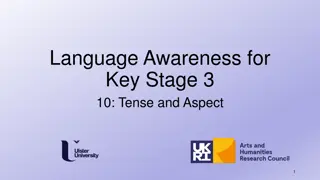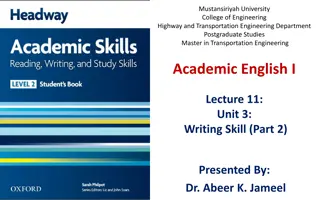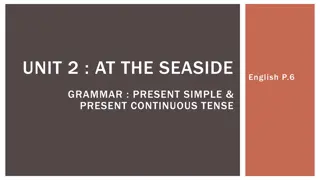Understanding Past Tenses in Narratives
Exploring the use of past simple, past continuous, past perfect, and past perfect continuous tenses in narratives with examples and explanations. Learn how to convey different past events and their relationships in storytelling.
Download Presentation

Please find below an Image/Link to download the presentation.
The content on the website is provided AS IS for your information and personal use only. It may not be sold, licensed, or shared on other websites without obtaining consent from the author. Download presentation by click this link. If you encounter any issues during the download, it is possible that the publisher has removed the file from their server.
E N D
Presentation Transcript
Past simple, past continuous 1 We arrived at the airport and checked in. 2 We were having dinner when the plane hit some turbulence. At nine o clock most people on the plane were reading or were trying to sleep. 1 We use the past simple to talk about consecutive actions or situations in the past, i.e. for the main events in a story. 2 We use the past continuous (was / were + verb + -ing) to describe a longer continuous past action or situation which was in progress when another action happened, or to describe an action or situation that was not complete at a past time.
Past perfect, past perfect continuous 3 When we arrived at the airport, we suddenly realized that we had left one of the suitcases in the taxi. 4 We d been flying for about two hours when suddenly the captain told us to fasten our seat belts because we were flying into some very bad weather. 3 We use the past perfect (had + past participle) to talk about the earlier past , i.e. things which happened before the main event(s). 4 We use the past perfect continuous (had been + verb + -ing) with action verbs to talk about longer continuous actions or situations that started before the main events happened and have continued up to that point. Non-action verbs (e.g. be, have, know, like, etc.) are not normally used in the past continuous or past perfect continuous.
Past perfect simple or continuous? Lina was crying because she d been reading a very sad book. Lina didn t want to see the film, because she dalready read the book. The past perfect continuous emphasizes the continuation of an activity. (She may have just finished or still be reading the book.) The past perfect simple emphasizes the completion of an activity. (She has definitely finished the book.)





